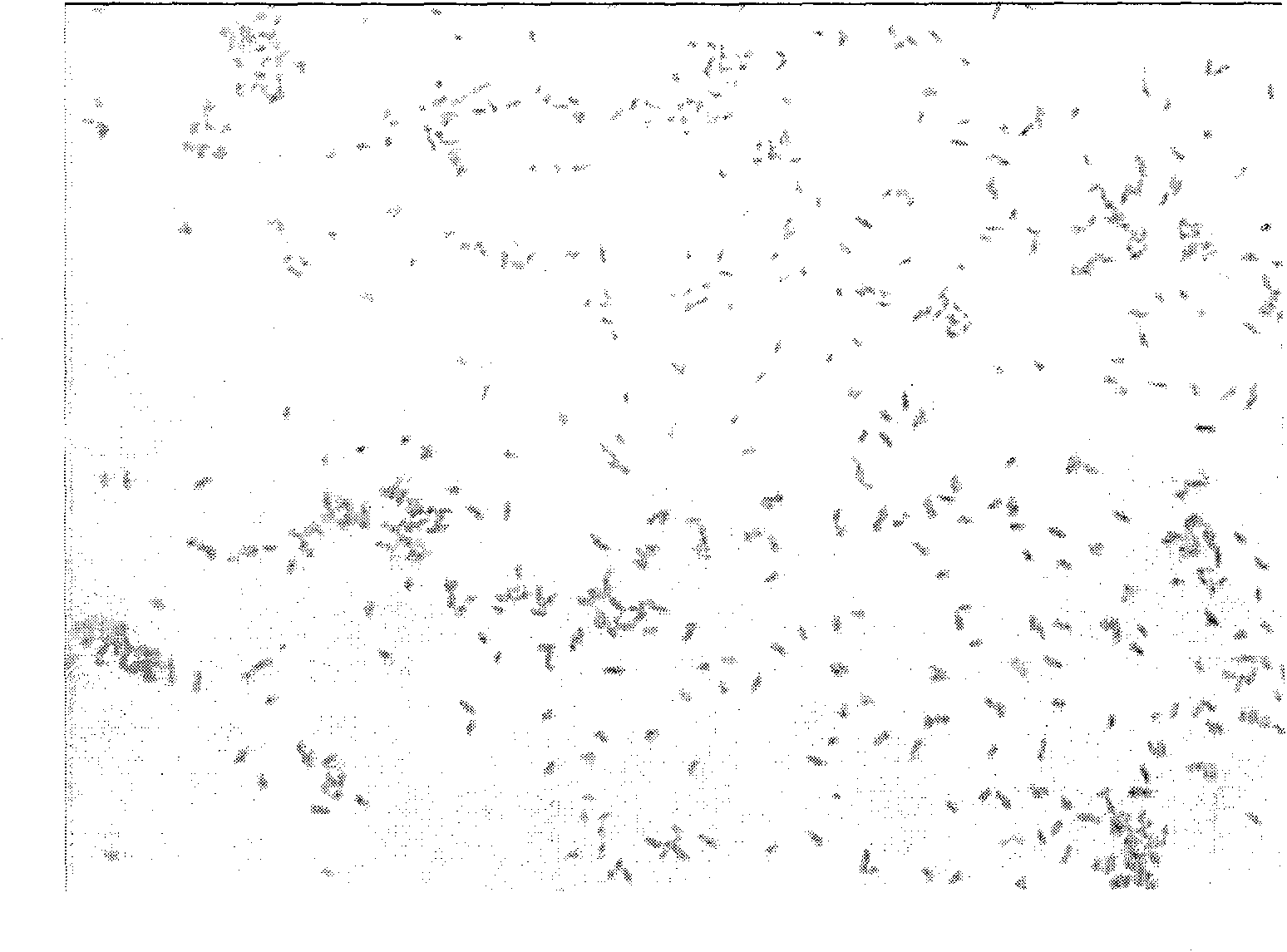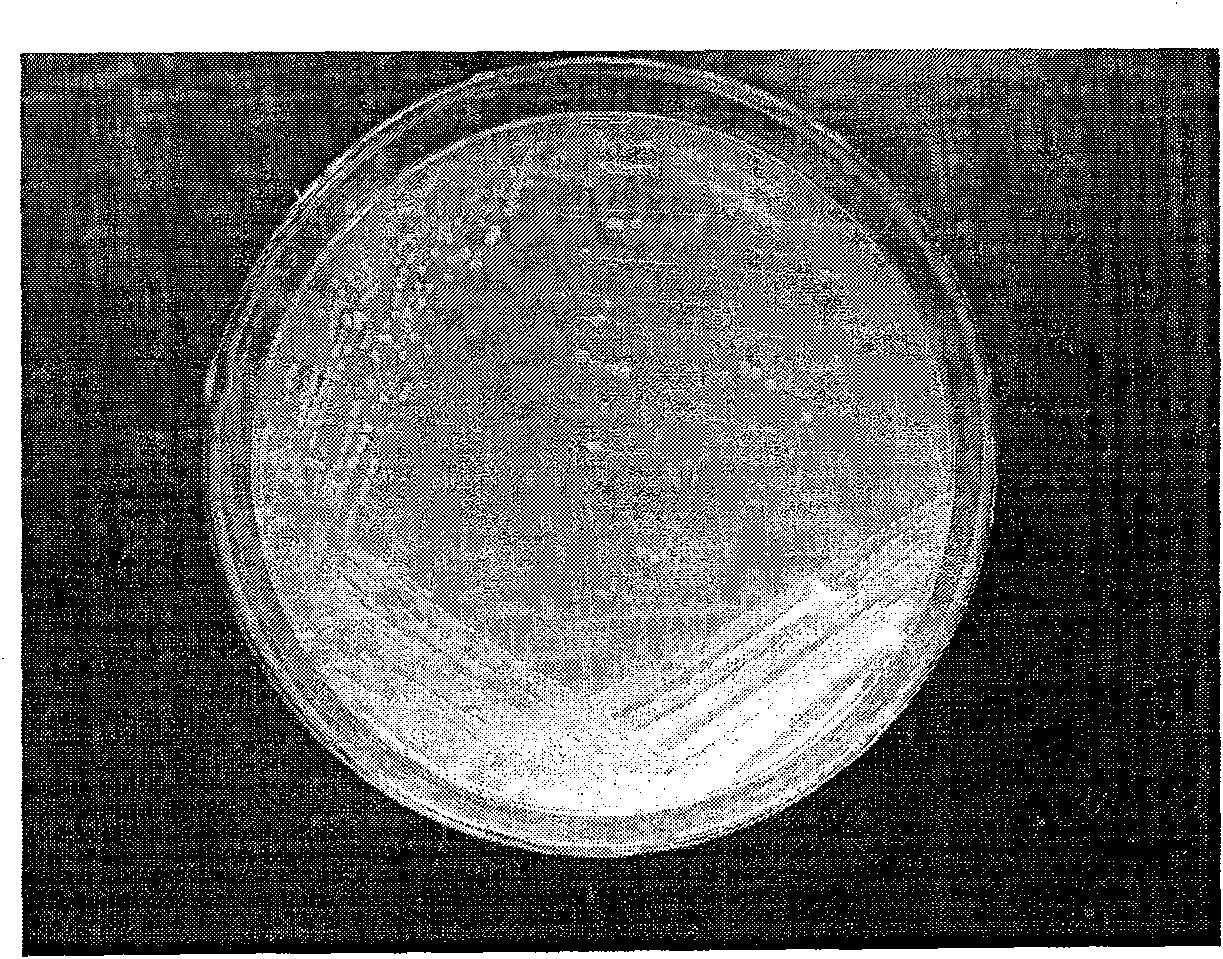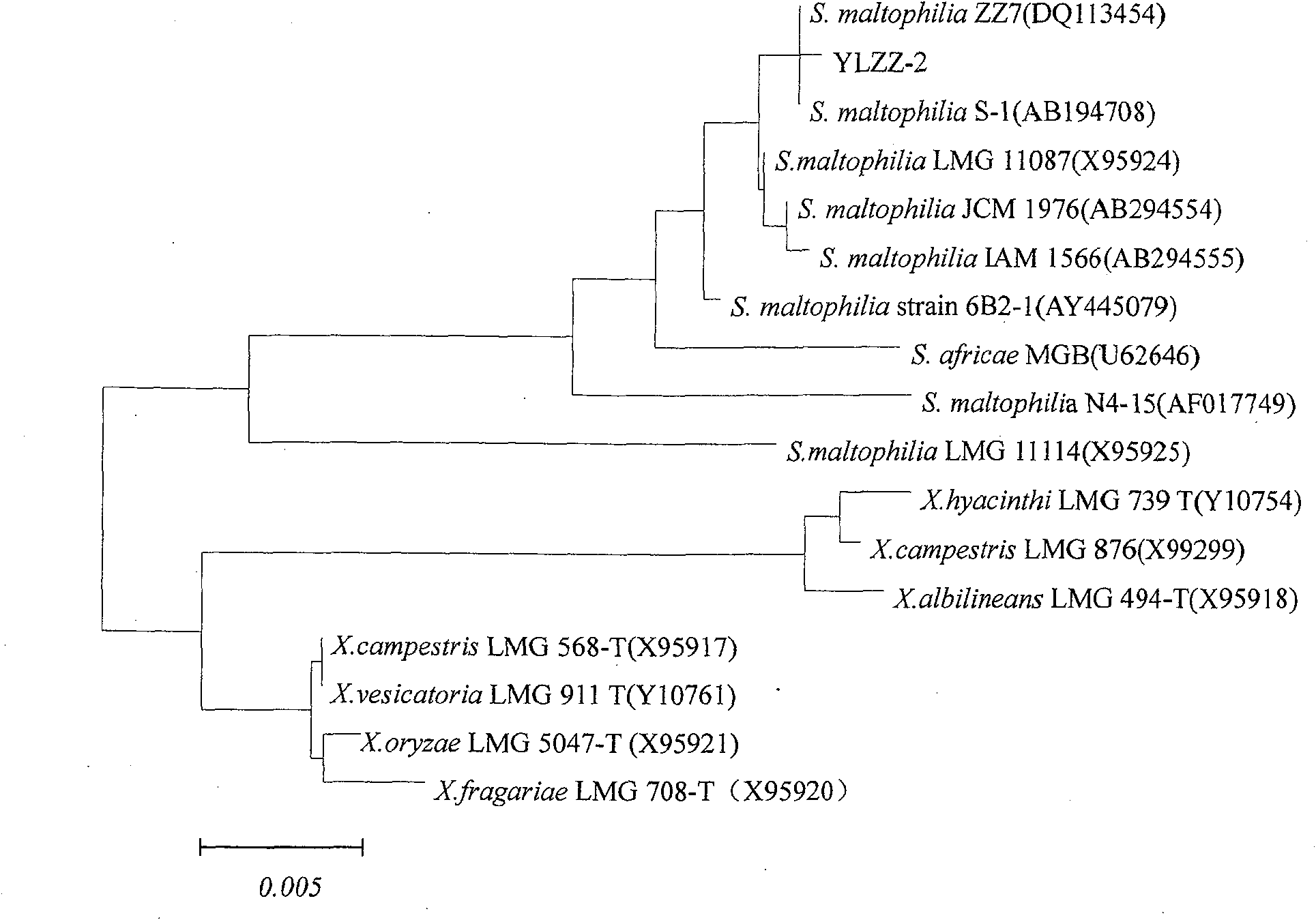Spherosinin degradation phage wheat germ oligotrophy unit cell bacterium YLZZ-2 and separation process thereof
A technology of Stenotrophomonas, YLZZ-2, applied in the field of microorganisms
- Summary
- Abstract
- Description
- Claims
- Application Information
AI Technical Summary
Problems solved by technology
Method used
Image
Examples
Embodiment 1
[0037] Embodiment 1: the preparation method of Stenotrophomonas maltophilia YLZZ-2 bacterial strain
[0038] 1) Collection of grass samples: locoweeds collected from growing places such as Gansu, Tibet, Inner Mongolia, and Qinghai;
[0039] 2) Preparation of soil samples: bury 1 kg locoweed in the soil at a depth of 10-20 cm, take out the soil around the grass sample half a year later, and fully mix the collected soil samples;
[0040] 3) Isolation and screening of bacterial strains: Take 10 g of well-mixed soil samples and add them to a conical flask filled with 90 mL of sterile water and sterile glass beads, place them on a shaker, shake fully at 200 r / min for 10 min, prepare a bacterial suspension, and then take Add 10mL of bacterial suspension into 100mL enrichment medium, and culture overnight at 30°C, 180r / min, pH 7.0, and then inoculate 10% of the inoculum into fresh acclimatization medium containing SW 30mg / L After culture, inoculate once every 4 days, and gradually i...
PUM
 Login to View More
Login to View More Abstract
Description
Claims
Application Information
 Login to View More
Login to View More - R&D
- Intellectual Property
- Life Sciences
- Materials
- Tech Scout
- Unparalleled Data Quality
- Higher Quality Content
- 60% Fewer Hallucinations
Browse by: Latest US Patents, China's latest patents, Technical Efficacy Thesaurus, Application Domain, Technology Topic, Popular Technical Reports.
© 2025 PatSnap. All rights reserved.Legal|Privacy policy|Modern Slavery Act Transparency Statement|Sitemap|About US| Contact US: help@patsnap.com



